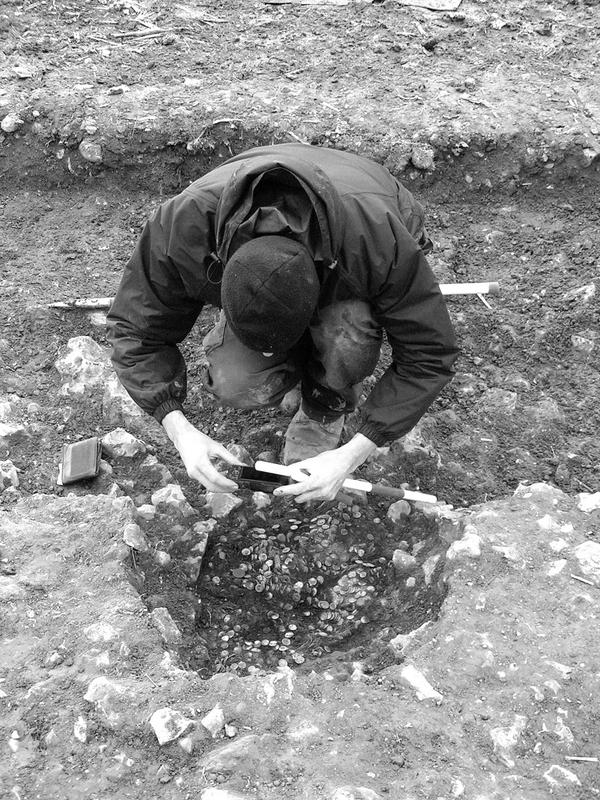
Detectorists left to their own devices.... A set of films posted on You Tube today about the weekend
‘Dunelme hoard’ hoik discussed on this blog and elsewhere a few days ago. It's called: "
roman hoard from the beggining" ooo-ar.
("once I realised what I had found I got my camera to record as much as I could"). What we see there gives only too good an insight into the way one may suspect that artefact hunters typically get their collectables out of the ground. Those of a nervous disposition are advised to look away, viewer discretion advised:
Published on 26 Sep 2014 by "
muddybandit1"
First we see two detectorists dancing around the spot where it seems something had been found, with their findspouches dangling like masonic aprons, round and round they go chaotically stabbing the earth with their spades. They are digging sideways. Spoil is being cast all around and right on the edge of the hoik hole, tumbling back down onto the area exposed, they've broken the pot already (00:49). There is very little checking the upcast for loose coins. The soil is coming out in large solid lumps anyway as the men hack deeper and deeper down around the original hoik hole. 3:50 out comes a squeaky pinpointer. 4:19 random grubbing around in the loose soil fallen back into the hole. At 4:40 there is discussion of there being a second pot in the side of the hole ("they buried them in threes"). 5:54 nobody came prepared: "anybody not gotta lit'le trowle?" The whole thing is being hacked out with spades. At 5:55 we see that they are well aware that they are trashing archaeology, it stops there" the man with the pinpointer declares, stabbing it with the tool "that's their hole". The sun is starting to get low, photography's going to be difficult soon. By *:30 they're obviously going for the Donut technique cutting down around the ring of soil where they suspect the pot lies (though the man with a shaved batman design on his head ['Andy'] suggested a minute earlier the pot was on its side).
9:38 they then start attacking the donut, brutally, with a spade. By
10:10 it is quite clear what they have ("bloody hell, there's 500 coins there, there may be another pot next to it") and that spades are not in any way the right tools to explore this. If before there was no reason to call the thing off and protect the site until archaeologists could come with more suitable tools and methods, then this is it. Indeed, two minutes later, one of the onlookers said, "tell you something,...
we should be marking it and leaving it, get the archaeologists in now" . He's shouted down by a coarse voice "
it want diggin' aht mate!" . There is a cacophony of 'helpful comments'. They think its an amphora... and they still insist there are three pots. Nobody on site seems to have the contact details to the landowner, why not?
Chaos, utter chaos. "Responsible detecting" this is not. Typical of many other cases however it may well be. What has the PAS to say about this? Another "You done right"? Come on, where is this outreach? Actually the PAS is out of the office, sipping bubbly and nibbling canapés in Bloomsbury today, celebrating a hoard that was not hoiked out like potatoes.
[UPDATE 28th September: it seems the original video has been deleted and the film of
the ignorant immoral
excavation has now for some reason been replaced by an intelligent
morally justifiable
one - by a bird, and then some voyeuristic film of girl videoed doing
gymnastics in the privacy of her own home, see below for a description
of what the original showed. UPDATE The original (?) video has been restored...]
Published on 26 Sep 2014 by "
muddybandit1"
Here we see how the hole looks after more digging, they've dug straight down around the pot (ignoring where they saw the edge of "their hole"). Then after the group photo we saw earlier, they lift the pot out onto an extempore bed of straw. The raggedy hole is scanned for more metal, then left. At 6:47 they detect another metal signal from deep in the subsoil ... but then the film breaks off. Perhaps just as well.































